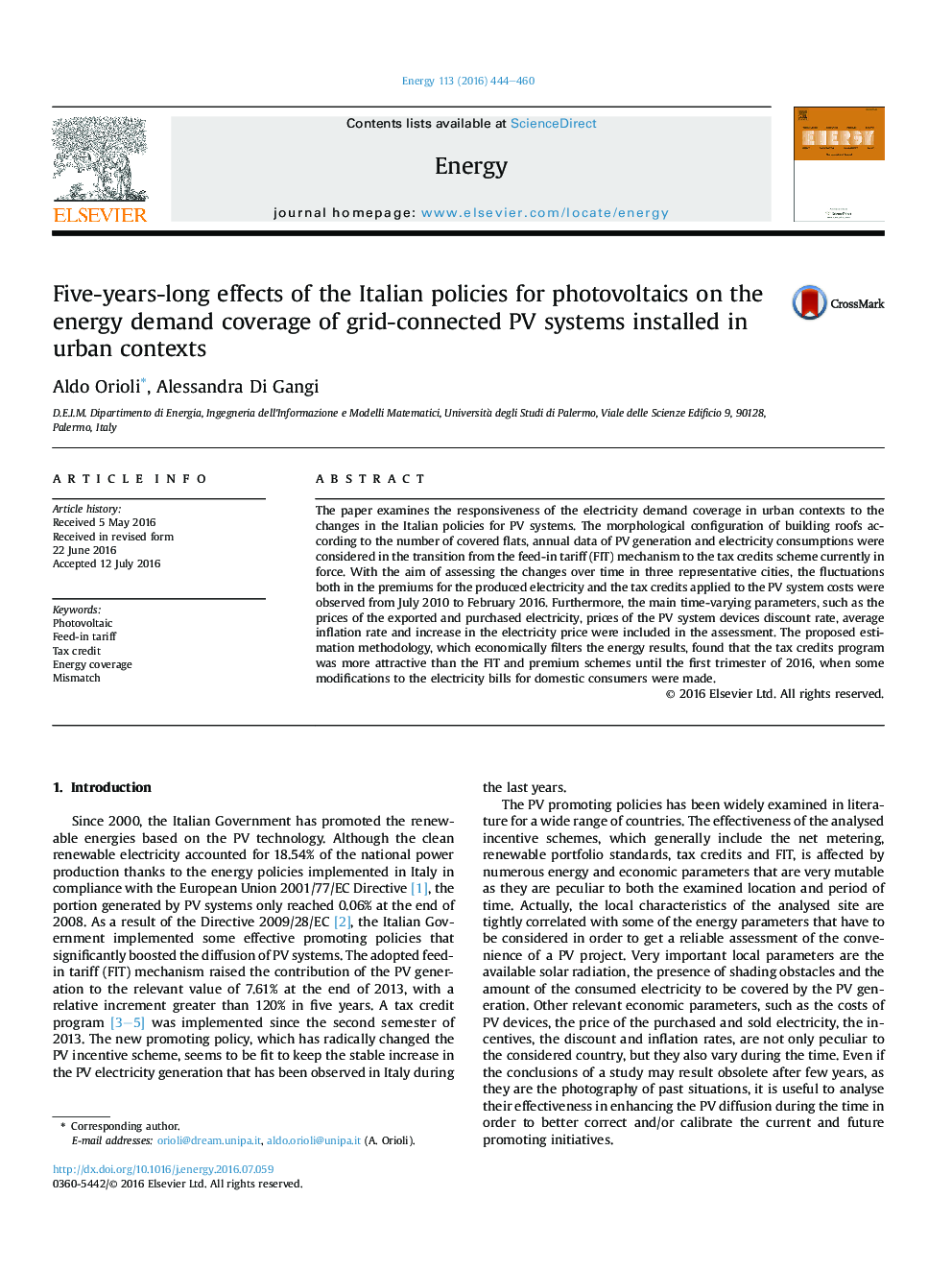| Article ID | Journal | Published Year | Pages | File Type |
|---|---|---|---|---|
| 1730753 | Energy | 2016 | 17 Pages |
•The electricity demand coverage in urban contexts was investigated over the time.•The feed-in tariff program and the tax credits scheme were investigated.•The tax credits scheme is more effective than the feed-in tariff mechanism.•The load mismatch was studied by means of a sensitivity analysis.
The paper examines the responsiveness of the electricity demand coverage in urban contexts to the changes in the Italian policies for PV systems. The morphological configuration of building roofs according to the number of covered flats, annual data of PV generation and electricity consumptions were considered in the transition from the feed-in tariff (FIT) mechanism to the tax credits scheme currently in force. With the aim of assessing the changes over time in three representative cities, the fluctuations both in the premiums for the produced electricity and the tax credits applied to the PV system costs were observed from July 2010 to February 2016. Furthermore, the main time-varying parameters, such as the prices of the exported and purchased electricity, prices of the PV system devices discount rate, average inflation rate and increase in the electricity price were included in the assessment. The proposed estimation methodology, which economically filters the energy results, found that the tax credits program was more attractive than the FIT and premium schemes until the first trimester of 2016, when some modifications to the electricity bills for domestic consumers were made.
